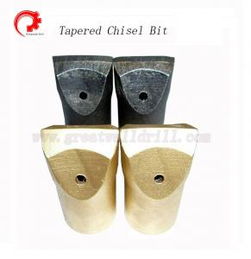
Milling Bits: A Comprehensive Guide
When it comes to metalworking, milling bits play a crucial role in shaping and cutting materials. Whether you are a hobbyist or a professional, understanding the different types, features, and applications of milling bits is essential. In this article, we will delve into the world of milling bits, providing you with a detailed and multi-dimensional introduction.
Types of Milling Bits

Milling bits come in various shapes and sizes, each designed for specific applications. Here are some of the most common types:
- End Milling Bits: These bits are used for cutting slots, pockets, and contours in materials. They come in straight, ball, and corner radiused designs.
- Face Milling Bits: Ideal for creating flat surfaces, face milling bits have a flat cutting edge and are used for roughing and finishing operations.
- Slotting Milling Bits: These bits are designed for cutting slots and grooves in materials. They come in various sizes and shapes, such as straight, dovetail, and T-slot.
- Drill Milling Bits: Combining the features of a drill and a milling bit, these tools are used for drilling and cutting slots in materials.
Features of Milling Bits

Understanding the features of milling bits can help you choose the right tool for your project. Here are some key features to consider:
- Material: Milling bits are made from various materials, including high-speed steel (HSS), carbide, and cobalt. Each material has its own advantages and applications.
- Coating: Some milling bits are coated with materials like titanium nitride (TiN) or diamond to improve their durability and reduce friction.
- Flutes: The number and shape of flutes affect the chip evacuation and cooling during the cutting process. More flutes can lead to better chip evacuation and reduced vibration.
- Shank Type: Milling bits come with different shank types, such as straight shank, Morse taper, and collet chuck. The shank type determines the compatibility with your machine.
Applications of Milling Bits

Milling bits are used in various industries and applications, including:
- Manufacturing: Milling bits are widely used in manufacturing processes for cutting and shaping metal, plastic, and wood materials.
- Automotive: These tools are essential for automotive manufacturing, where they are used for cutting engine blocks, cylinder heads, and other components.
- Aerospace: Milling bits are used in aerospace applications for cutting and shaping lightweight materials like aluminum and titanium.
- Construction: These tools are used in construction for cutting and shaping materials like concrete, steel, and wood.
Choosing the Right Milling Bit
Selecting the right milling bit for your project involves considering several factors:
- Material: Choose a bit made from the appropriate material for the material you are working with. For example, carbide bits are ideal for cutting hard materials like stainless steel.
- Application: Consider the specific application, such as cutting slots, pockets, or contours, and choose a bit with the appropriate shape and size.
- Machine Compatibility: Ensure that the bit’s shank type is compatible with your machine’s collet chuck or spindle.
- Machine Speed and Feed Rate: Consider the machine’s speed and feed rate when selecting a bit to ensure optimal performance and tool life.
Table: Comparison of Milling Bit Materials
| Material | Advantages | Disadvantages |
|---|---|---|
| High-Speed Steel (HSS) | Cost-effective, versatile, and suitable for a wide range of materials. | Lower durability compared to carbide and cobalt. |
| Carbide | High durability, excellent
Related Postsbore bit home depot,Bore Bit Home Depot: A Comprehensive GuideBore Bit Home Depot: A Compreh… dremel drill bits,Dremel Drill Bits: A Comprehensive Guide for EnthusiastsDremel Drill Bits: A Comprehen… Like |







